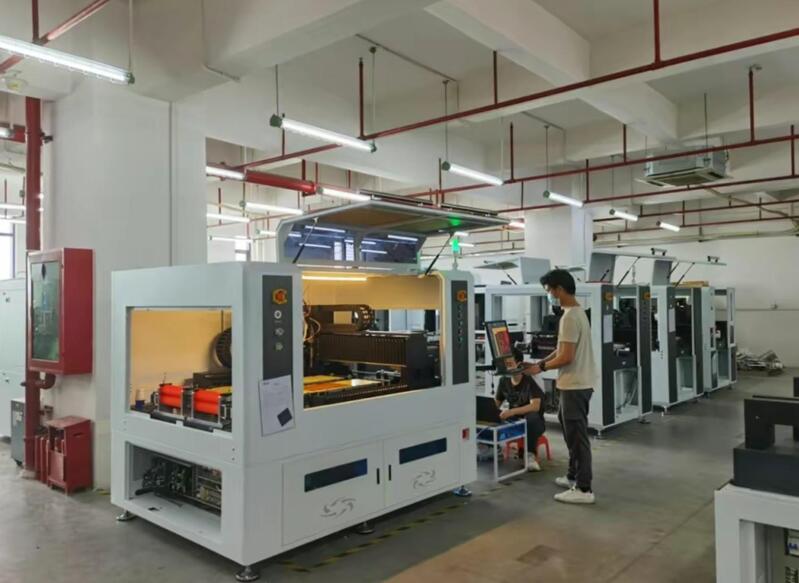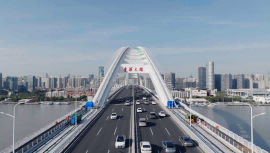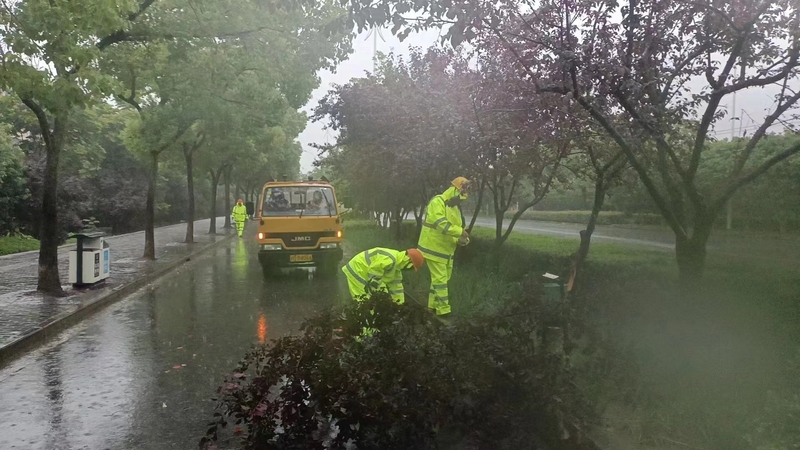Why did Shanghai revive its 25% manufacturing policy? Just take a look at Singapore, Hangzhou, and Shenzhen, and you'll know... Smart Factory | Tesla | Holding Manufacturing | Industrial Value Added | 25% | Manufacturing | Singapore | Industrial Upstairs
On June 15th, the Shanghai Municipal Government held a press conference to introduce the newly issued "Three Year Action Plan for Promoting High Quality Development of Manufacturing Industry in Shanghai". The core sentence of the entire text is that by 2025, the added value of Shanghai's industry will account for more than 25% of the regional GDP.
A similar situation occurred 7 years ago. At the same press conference of the Shanghai Municipal Government, the newly prepared "Thirteenth Five Year Plan for the Transformation and Upgrading of Shanghai's Manufacturing Industry" was interpreted, clarifying that by the end of the "Thirteenth Five Year Plan", the goal of maintaining the proportion of manufacturing added value to GDP at around 25% will be achieved.
So over the years, have we held onto the 25% bottom line?
Let's first look at the end of the 13th Five Year Plan. According to public data from the Municipal Bureau of Statistics, in 2020, the gross domestic product of Shanghai was 3870.058 billion yuan; The added value of the secondary industry is 1028.947 billion yuan. The latter accounts for 26.6% of the former.
Looking at the 14th Five Year Plan again, there are subtle changes.

In the "14th Five Year Plan for the Development of Advanced Manufacturing Industry in Shanghai" issued in July 2021, the relevant wording stated: "By 2025, maintain the proportion of manufacturing industry that is suitable for the urban functions and high-quality development of Shanghai."
According to public data from the Municipal Bureau of Statistics, the ratio of industrial added value in 2021 to regional GDP for that year is 24.9%; In the following year of 2022, the ratio increased to 24.5%.
Moving on to 2023, this year, Shanghai will see a 25% increase.
Why keep it?
There has been significant controversy over whether Shanghai should develop a manufacturing industry in order to become an international metropolis. However, the global economic crisis experienced since the beginning of the 21st century, as well as the "hollowing out" brought about by the blindly developing service industries in many regions, have gradually led to the loss of the "de manufacturing" perspective in the market.

The World Bank research team once conducted a report, which mentioned that in mega cities like Shanghai, the proportion of manufacturing should be between 25% and 30%.
The manufacturing industry is the foundation of a country, the foundation of a strong country, and an important support for the real economy. Regarding this point, it is not only Shanghai, but also cities such as Shenzhen, Hangzhou, and Suzhou in China that practice industrial and manufacturing development. For example, in Nanshan, Shenzhen and Binjiang, Hangzhou, the buildings in their industrial parks are not inferior to those in Qiantan, Shanghai, but they have developed solid industries such as Huawei, Mindray Medical, DJI drones, and Hikvision.
Looking outside, Shanghai's benchmark city Singapore is also very inspiring. ASMPT, a leading global provider of comprehensive solutions for the semiconductor and electronics industry, is "manufacturing upstairs" in Singapore. On the 5th floor of the office building, ASMPT is producing integrated circuit specific soldering machines, one after another, creating a manufacturing scene. Even if the components of the welding machine come from Guangdong, China, Singapore must keep the assembly in its own country, and after assembly into a complete machine, it may be sold to China again. This is Singapore's direction, which is to maintain a manufacturing proportion of 25% to 30% no matter what.
Because of manufacturing, research and development can be retained; Only with manufacturing can the productive service industry related to manufacturing prosper; Only with manufacturing can employment be stabilized.
Undoubtedly, the cost of doing industry in international big cities is not low. However, the cost of not engaging in industry is even greater.

Who will guard it?
For Shanghai, it is difficult to maintain a 25% manufacturing target, but there is no way out. The answer from the industrial sector lies in industrial upgrading.
Seven years ago, when the "13th Five Year Plan" for the transformation and upgrading of Shanghai's manufacturing industry was issued, Shanghai focused on six key industries, including aerospace, equipment manufacturing, automobiles, consumer goods manufacturing, biopharmaceuticals, and petrochemical steel.
By the end of the 13th Five Year Plan period, in December 2020, the "Proposal of the Shanghai Municipal Committee of the Communist Party of China on Formulating the 14th Five Year Plan for Shanghai's National Economic and Social Development and the Long Range Objectives for 2035" broke the traditional positioning of the six key industries in Shanghai's industrial sector, led by national strategy, carried out a pioneering layout, and innovatively proposed the "3+6" industrial layout. After definition and adjustment, "3+6" has been finalized as, "3" refers to the three leading industries of integrated circuits, biopharmaceuticals, and artificial intelligence; "6" has advanced into six key industries: electronic information, life and health, automobiles, high-end equipment, advanced materials, and fashionable consumer goods.
Since 2021, Shanghai has been brewing and launching four new tracks, as well as five future industries. The four new tracks refer to the digital economy, green and low-carbon, metaverse, and intelligent terminals; The five future industries refer to future health, future intelligence, future energy, future space, and future materials.
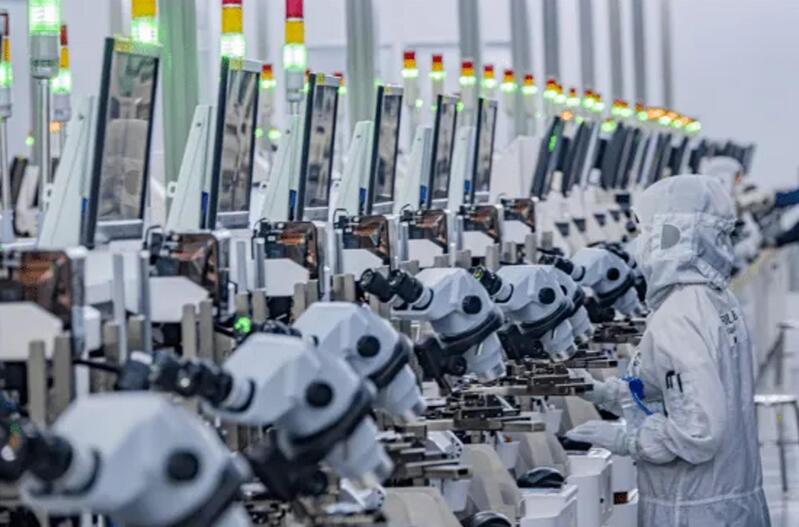
In addition, accelerating the transformation of traditional industries into digitalization and green low-carbon, Shanghai's modern industrial system has been continuously strengthened, forming the current "2++" pattern.
Compared to being alone in a "6" 7 years ago, the current "3645" driven by both digital and green technologies is keeping up with the times, seizing the forefront, and highlighting the high-end.
But 25% cannot be achieved by beating gongs, drums, and shouting slogans. In the three-year action plan, the reporter clearly saw the strong execution model of wall chart operations, reverse scheduling, and item by item decomposition.
Those who are capable work hard, and "3+6" naturally has to shoulder the heavy responsibility. On June 15th, Li Zheng, Vice Mayor of Shanghai, made a clear division of labor for "3+6" - the three leading industries should promote the construction of world-class industrial clusters; Four industries, including electronic information, life and health, automobiles, and high-end equipment, should form four trillion level industrial clusters; The advanced materials and fashion consumer goods industry has a scale of 500 billion yuan.
Tesla Shanghai Super Factory.
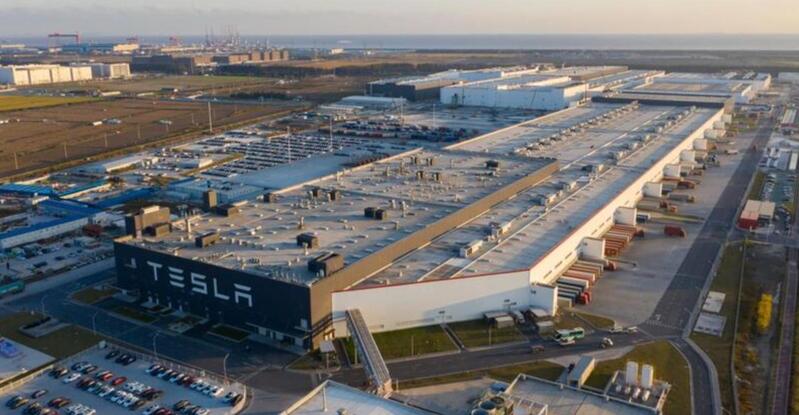
Regardless of whether the industry cluster is worth trillions or billions, it is not easy to remember or catchy, but rather has a factual basis to rely on.
For example, public data shows that in 2022, the total scale of Shanghai's three leading industries exceeded 1.4 trillion yuan. In this three-year action plan, it is explicitly proposed that the total scale of the three leading industries will reach 1.8 trillion yuan in three years.
The reporter found that 1.8 trillion yuan is relatively conservative. On the basis of a total scale of 1.4 trillion yuan in the three leading industries in 2022, it is appropriate to achieve 1.8 trillion yuan by 2025 with an annual growth rate of 10%. In fact, the growth rate of the three major industries has always remained high, with an average annual growth rate of 20% in 2020 and 2021. Even in the special year of 2022, the growth rate still reached 10%.
And the four trillion level industrial clusters also have considerable confidence. Taking the automotive industry as an example, Han Dadong, Director of the Intelligent Manufacturing Promotion Department of the Shanghai Municipal Commission of Economy and Information Technology, once introduced that the automotive industry chain in Shanghai is complete, with 8 complete vehicle enterprises and 610 component enterprises laid out. In 2022, the automotive industry output value exceeded 800 billion yuan, and with one's own efforts, it has shouldered 20% of the city's industrial scale. The high-end equipment manufacturing industry in Shanghai has also performed well, with a production value of 612.7 billion yuan in 2022. Among them, the industrial robot field has become an "open market". In 2022, under the pressure of the epidemic, the annual production exceeded 75000 units, ranking first in domestic cities and accounting for up to 20% of the national proportion. At present, the "four major families" of international robots, namely ABB, Fanuc, Yaskawa, and Kuka, have all been established in Shanghai and continue to be put into production. At the same time, local robot brands such as Xinshida, Jieka, and Xinsong have emerged.
Xinsong Robot.

Jieka Collaborative Robot.
As for "4" and "5", relevant action plans have been formulated, with only three new tracks: green and low-carbon, metaverse, and intelligent terminals. Based on the existing foundation, we aim to break through the scale of 1.5 trillion yuan by 2025. The five future industries have a relatively long-term vision, with a planned output value of 500 billion yuan by 2030. The future industry needs care and patience the most, but Xiaohe has already shown its sharp edges. For example, in the field of future energy, Dr. Guo Houyang, a top global scientist in plasma physics and nuclear fusion energy, has founded an energy singularity fusion energy development company in Shanghai, taking the new technological route of "magnetic confinement fusion", which is expected to fundamentally solve the ultimate energy problem for humanity. In the future space field, Shanghai Yuanxin Satellite Technology is expected to benchmark the Musk "Star Chain" program and achieve a transition from "following" to "running in parallel".
"3+6" is the "today" of Shanghai's industry; "4" and "5" are "tomorrow" and "the day after tomorrow", respectively. Today, tomorrow, and the day after tomorrow, it will definitely be the main force that holds 25% of the manufacturing industry in Shanghai.
How to guard it?
For this 25%, Shanghai will defend it with six major actions and 22 tasks. The six major actions include the Strong Chain Upgrade Action, the Strong Foundation Building Action, the Digital Butterfly Transformation Action, the Green Leading Action, the Enterprise Growth Action, and the Space Expansion Action.
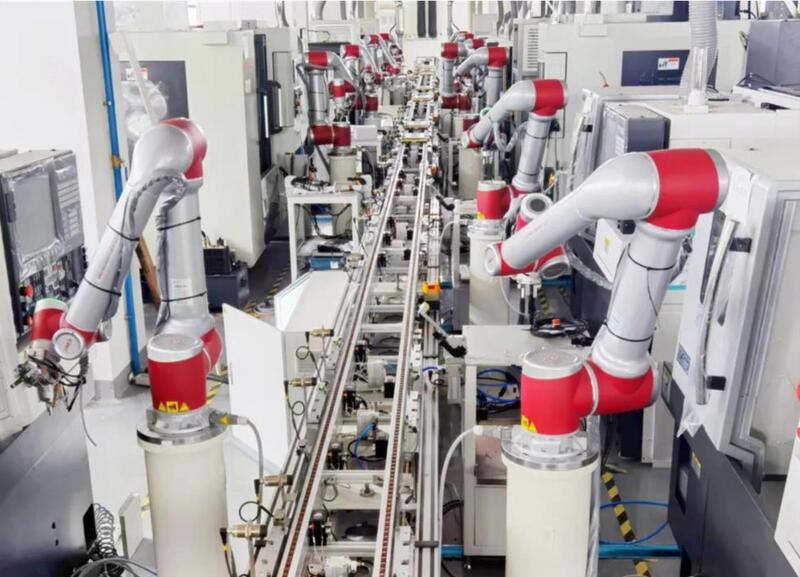
But the journalist believes that digital transformation and spatial expansion are crucial.
Faced with increasingly expensive land and rising labor costs, it is obvious that traditional manufacturing is still being done in place, which is a waste. Wu Chunping, Deputy Director of the Intelligent Manufacturing Department of the Municipal Commission of Economy and Information Technology, told reporters about a typical case - the leading domestic refrigeration compressor industry leader, Haili Group. A few years ago, due to the lack of expansion space in the two major factories in Shanghai, some production capacity was transferred to Sichuan, Jiangxi, and even overseas. But Haili did not give up its Shanghai factory, but instead focused on high-end product research and development, while gradually building four intelligent production lines. This foresight of being the first to layout an intelligent factory was validated after the outbreak of the epidemic - due to the large number of robots on the battlefield, the factory has achieved a reduction in manpower, and Haili's resumption of work and production is much more relaxed than traditional factories; Haili is also gradually handing over high value-added products to "machine workers" with confidence.
Haili Workshop.
"It is intelligent factories that have transformed Shanghai's manufacturing industry from relying on land and human resources in the past to relying on knowledge-based and skilled talents, finance, and the ecosystem of the industrial chain," said Wu Chunping.
In the detailed indicators of this three-year action plan, it is required that by 2025, the proportion of digital transformation of manufacturing enterprises above designated size in Shanghai should reach over 80%, and the usage density of industrial robots should strive to reach 360 units/10000 people. In the 10th task, which is to accelerate the construction of smart factories, it is also clear to implement the smart factory navigation plan, develop a "one factory, one plan", create 20 benchmark smart factories and 200 demonstration smart factories, innovate "smart evaluation vouchers", and provide evaluation, diagnosis, renovation and upgrading services for enterprises.

Another issue is about the carrier of industrial space.
In May of this year, the Shanghai Municipal Party Committee for Economic and Information Technology, in conjunction with the Party Group of the Municipal Planning and Natural Resources Bureau, directly penetrated the on-site investigation and resolution of issues in the park. In the emerging technology development zone of Caohejing, Shanghai Shende non-invasive era medical technology Co., Ltd., the scene before us is complex - on the first floor of the company, there are several testing equipment like lathes, and rows of wooden cargo boxes are piled up in the corners, making it difficult to distinguish whether it is an office space, a factory building, or a warehouse. This innovative enterprise, led by an academician of the CAE Member and with completely independent intellectual property rights, has assembly, light manufacturing and testing links in its process, but the existing space carrier has become so narrow that "there is no place to display even the certificate of merit".
Shanghai Shende non-invasive era medical technology Co., Ltd. has limited space.
Shanghai's land resources are limited, how can we make bread with just a little bit of flour?
Industrial development, intensive land use, or problem-solving methods. Shenzhen has become a pioneer in borrowing space from the sky.
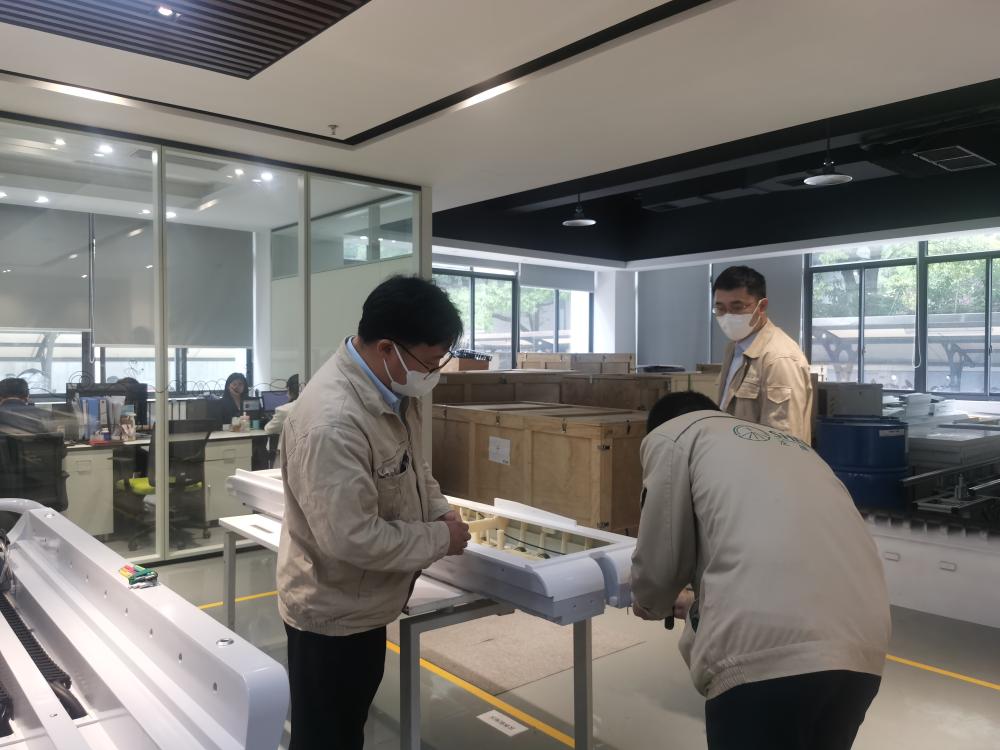
Official data shows that in 2022, the total output value of industrial enterprises above designated size in Shenzhen exceeded 4.5 trillion yuan, and the added value exceeded 1.1 trillion yuan, achieving the "Double First" of cities in China. But in fact, the industrial land in Shenzhen is only 40.2% of that in Shanghai and 28.8% of that in Suzhou.
Shenzhen Quanzhi Science and Technology Innovation Park is China's first "industrial upstairs" project, with dual standards of Grade A office buildings and industrial factories. The 23 story Quanzhi Science and Technology Innovation Building has a floor height of 4.2 meters, a load of 750 kilograms per square meter, and a column spacing of 8.2 meters. The building is equipped with 8 intelligent high-speed passenger elevators, 6 large cargo elevators, and a large unloading platform to ensure the vertical transportation capacity of the building. The sound of machines on each floor is booming.
Shenzhen Quanzhi Science and Technology Innovation Park is China's first "industrial upstairs" project.
At present, there are dozens of "industrial upstairs" projects in Shenzhen, with an average plot ratio of 4.2.
Shanghai is also solving problems. Of course, the issue to be solved is not just about plot ratio.
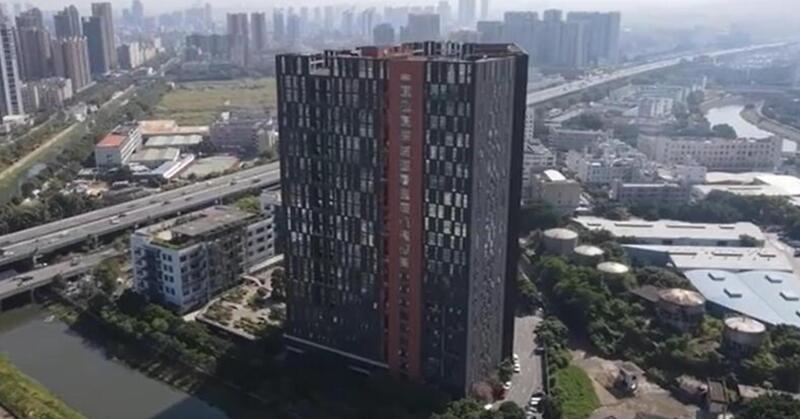
In the Shanghai Caohejing Emerging Technology Development Zone, emerging industries such as biopharmaceuticals, industrial automation, and artificial intelligence are increasingly inclined towards high standard composite production carriers. The park has proposed whether the industrial regulatory department can pre identify industrial projects, thereby providing support for planning indicators and design scheme approval? Can the industrial and R&D land in the development zone be retained to support an increase in plot ratio? Can we allow pilot testing on C65 land?
Shanghai Jinqiao Group has launched a pilot project of "industrial upgrading" in the Jingu area, positioning itself as an intelligent terminal manufacturing base. It plans to build a complete industrial ecosystem in a single industrial factory building and proposes three suggestions - adjusting planning indicators with a plot ratio of less than 3.0 and a height of less than 60 meters, which are expected to be included in the simplified process; During the planning and adjustment process, we hope to simultaneously carry out scheme research and sign land transfer contracts to accelerate subsequent construction; Looking forward to exploring new models of post approval management to avoid the transformation of land into real estate.
On the front line of research, the Municipal Commission of Economy and Information Technology and the Municipal Planning and Resources Bureau responded on the spot——
In the "Several Measures for Promoting the Development of High end Manufacturing Industry in Shanghai" released in September last year, it was clearly stated that "exploring new models of industrial upgrading" and encouraging intensive use of industrial and research and development land were encouraged. The plot ratios of industrial land and general research and development land were not less than 2.0 and 3.0, respectively. At present, the Municipal Commission of Economy and Information Technology has refined the industrial categories of "industrial upstairs", explored relevant planning and construction guidelines, and worked with the ecological environment and planning resources departments to study and plan, allowing C65 land to carry out pilot projects with low risk levels and low environmental pollution.
In the "Implementation Rules for Accelerating the Promotion of Industrial Project Planning" issued by the Municipal Planning and Resources Bureau in 2019, it is clear that the calculation of building height and area is required. For industrial plants and warehouses with a building height exceeding 8 meters due to special processes, after consultation with the industry regulatory department, the actual building area of that floor will be included in the plot ratio instead of double the calculation. In addition, the Municipal Planning and Resources Bureau has significantly improved the efficiency of planning and management processes related to industrial projects. For projects within industrial bases and communities, the construction management stage can connect with industrial development requirements and directly determine relevant construction indicators within the corresponding range.
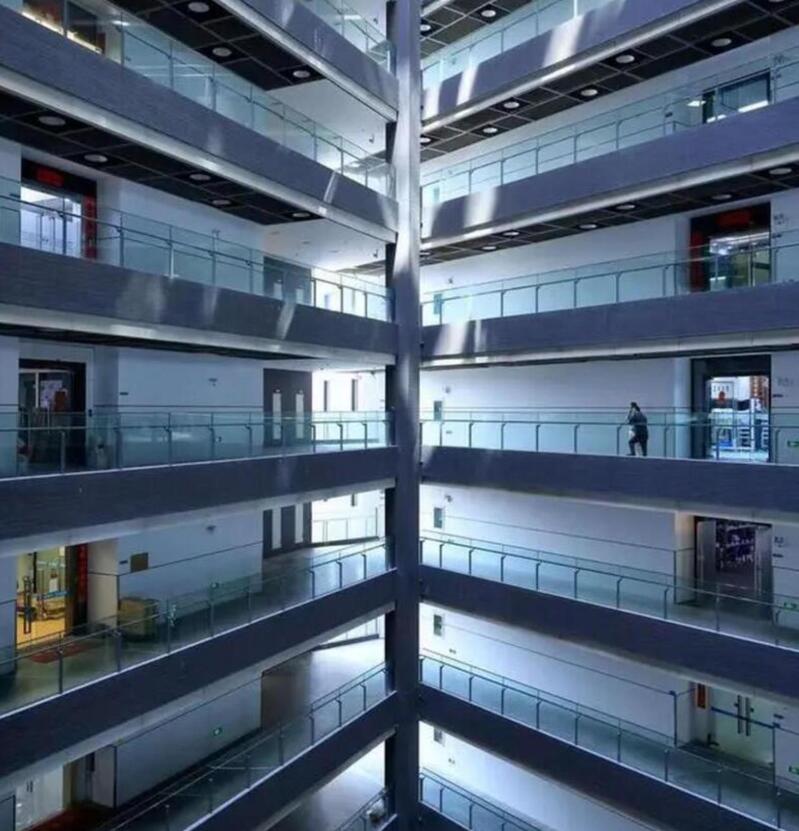
Strong entity, promoting industry, maintaining growth, managing inventory, and reducing inefficiency are the keywords used in the research site; Intrinsic, intensive, and high-quality are the benchmarks that industry and planning departments are willing to give to flour.
Shanghai Lingang Life Blue Bay is home to a concentration of biopharmaceutical companies.
Looking back at the 25% red line algorithm. The total industrial output value is not necessarily proportional to industrial added value. Only with fewer intermediate inputs such as raw materials can industrial added value be higher. To maintain the proportion of industrial added value to GDP, we need to focus on numerology and improve the quality of industry.
This requires comprehensive policies from multiple departments, and requires market entities and the government to work together, which is truly not easy.
But Singapore, where every inch of land is worth every penny, can do it, and Shanghai has no reason not to.
